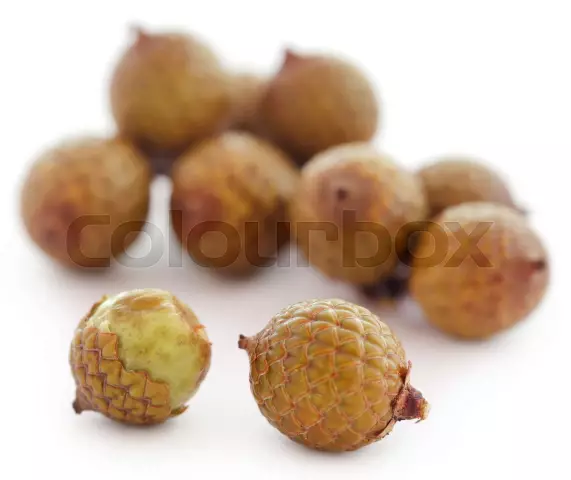- Author Rachel Wainwright [email protected].
- Public 2023-12-15 07:39.
- Last modified 2025-11-02 20:14.
Agnucaston
Instructions for use:
- 1. Release form and composition
- 2. Indications for use
- 3. Contraindications
- 4. Method of application and dosage
- 5. Side effects
- 6. Special instructions
- 7. Drug interactions
- 8. Analogs
- 9. Terms and conditions of storage
- 10. Terms of dispensing from pharmacies

Agnucaston is a drug with hypoprolactinemic action.
Release form and composition
Dosage forms of Agnucaston release:
- Drops for oral administration (50 or 100 ml in dark glass dropper bottles, 1 bottle in a cardboard box);
- Film-coated tablets (15 pcs. In blisters, 2 or 4 blisters in a cardboard box).
The active substance in the composition of 100 mg drops for oral administration: the fruits of the common rod in the form of a dry extract (Vitex Agni casti fructus) - 0.192-0.288 mg (medicinal plant raw materials - 2.4 mg; contains 17-19 vol.% Ethanol).
The active substance is in the composition of 1 coated tablet: the fruits of the common rod in the form of a dry extract (Vitex Agni casti fructus) - 3.2-4.8 mg (medicinal plant raw materials - 40 mg).
Indications for use
- Violations of the menstrual cycle, which are associated with insufficiency of the corpus luteum;
- Premenstrual syndrome;
- Mastalgia (mastodynia).
Contraindications
- Pregnancy and lactation period;
- Hypersensitivity to drug components.
Method of administration and dosage
Agnucaston is taken orally. Do not chew the tablets.
The daily dose is 1 tablet or 40 drops for oral administration. The drug is taken in 1 dose.
The duration of the therapeutic course is at least 3 months (you should not take a break during menstruation).
If, after the end of therapy, complaints continue, you need to consult a specialist and continue taking Agnucaston.
Side effects
Possible side effects: confusion, psychomotor agitation, allergic skin reactions, hallucinations.
special instructions
In cases of development of weakness, pain in the mammary glands, depression, menstrual irregularities, it is recommended to consult a specialist.
Agnucaston drops should not be taken after successful therapy for alcoholism.
The bottle with drops should be shaken before use. The bottle must be held upright during use.
The tablets contain milk sugar (lactose), which can lead to diarrhea and stomach pain.
Drug interactions
With the combined use of Agnucaston with dopamine receptor antagonists, a mutual decrease in the effect is observed.
Analogs
Cyclodinone is an analogue of Agnucaston.
Terms and conditions of storage
Store in a dark, dry place out of reach of children at temperatures up to 25 ° C.
The shelf life is 3 years.
Terms of dispensing from pharmacies
Dispensed by prescription.
Information about the drug is generalized, provided for informational purposes only and does not replace the official instructions. Self-medication is hazardous to health!






